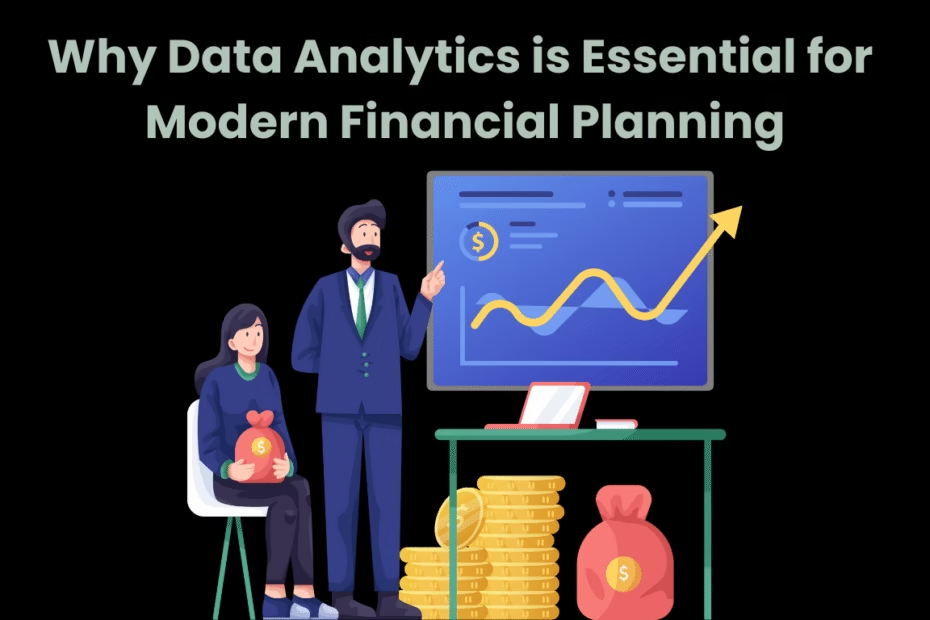In today’s rapidly evolving financial landscape, individuals and organizations face an overwhelming amount of data. From market fluctuations and investment opportunities to personal spending habits and retirement planning, the financial world generates vast amounts of information every second. To make sense of it all, modern financial planning requires more than intuition and experience—it depends on data-driven insights. This is where data analytics plays a critical role.
Understanding the Shift in Financial Planning
Traditional financial planning was often guided by historical performance, expert judgment, and static financial models. While these methods provided some level of guidance, they lacked the depth to capture the complexities of modern financial ecosystems. Today’s economy is influenced by a mix of global markets, technological disruptions, regulatory changes, and unpredictable economic events. Without the ability to analyze real-time data and predict potential outcomes, financial planning risks becoming outdated and ineffective.
The Role of Data in Decision-Making
Financial planning requires making informed choices about investments, savings, and risk management. Data analytics provides clarity by transforming raw numbers into actionable insights. For example:
- Market Analysis: Investors can analyze stock performance, global trends, and sector-specific data to identify promising opportunities.
- Risk Assessment: Analytics tools can simulate scenarios such as market downturns, allowing planners to evaluate risks before making commitments.
- Personal Finance: Individuals can track spending habits, debt, and savings patterns, creating personalized strategies for long-term financial stability.
By leveraging these capabilities, financial planners and individuals gain a clearer picture of both short-term needs and long-term goals.
Personalization in Financial Strategies
No two individuals or businesses share identical financial goals. A young professional saving for a home will have different priorities than a retiree seeking stable income. Data analytics enables customization by analyzing unique financial behaviors and projecting tailored outcomes. With personalized insights, financial planners can recommend strategies that maximize growth, minimize risk, and align with specific life goals.
For example, tracking spending through advanced financial applications can highlight areas where savings are possible, while predictive analytics can estimate how today’s decisions will influence future wealth. This level of personalization was not possible in the era of one-size-fits-all financial planning.
Predictive Capabilities
One of the most valuable aspects of data analytics is its predictive power. By examining past and current financial data, advanced algorithms can forecast trends and outcomes with impressive accuracy. This allows planners to anticipate market shifts, optimize asset allocation, and prepare for potential disruptions.
Consider retirement planning: predictive analytics can project how various savings rates, investment types, and lifestyle choices will affect retirement income decades into the future. Similarly, businesses can forecast cash flow, anticipate market demands, and prepare strategies to stay competitive.
Real-Time Monitoring and Adjustment
Financial plans are not static—they must evolve as circumstances change. Data analytics tools allow for continuous monitoring of portfolios, budgets, and spending patterns. Real-time insights ensure that adjustments can be made quickly, reducing the risk of missed opportunities or escalating losses.
For instance, an investor may set automated alerts to rebalance their portfolio if certain stocks underperform, or a household may receive recommendations on adjusting their budget after unexpected expenses. These dynamic capabilities enhance financial resilience.
Enhancing Transparency and Trust
Data-driven financial planning also improves transparency. Instead of relying solely on advice from financial advisors, individuals and organizations can see the numbers, models, and predictions behind every recommendation. This transparency fosters greater trust and empowers clients to make more informed decisions.
Additionally, regulatory compliance becomes more manageable with accurate data tracking and reporting. Companies in particular benefit from analytics that ensure financial practices align with legal requirements, reducing the risk of penalties.
Applications in Business and Personal Finance
The impact of analytics is visible across both personal and corporate financial planning:
- Personal Finance Apps: Applications that track spending, categorize expenses, and suggest saving opportunities use analytics to guide individuals toward better money management.
- Corporate Planning: Businesses use data-driven models to optimize budgets, manage debt, and identify profitable investment opportunities.
- Wealth Management: Advisors use analytics platforms to develop diversified portfolios tailored to risk tolerance and long-term objectives.
These applications demonstrate why embracing data analytics in finance has become not just an option, but a necessity.
Read More: How to Leverage Data Analytics to Optimize Your eCommerce Store Performance
Final Thoughts
Modern financial planning is no longer about guessing or relying solely on past performance. It is about making informed, data-driven decisions that adapt to an ever-changing world. From individuals managing personal budgets to corporations navigating complex investments, the ability to harness analytics provides a competitive advantage.
By leveraging advanced tools, predictive models, and real-time monitoring, financial planners can create strategies that are precise, personalized, and future-focused. In a world where financial uncertainty is the norm, data analytics stands as the foundation of clarity and confidence.

